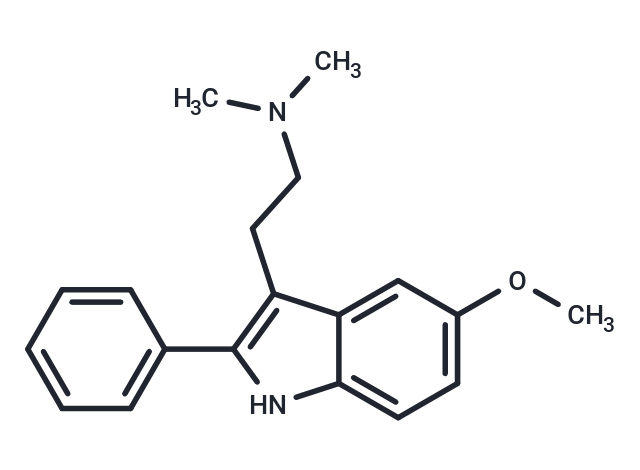Shopping Cart
- Remove All
 Your shopping cart is currently empty
Your shopping cart is currently empty

BGC20-761 is a selective 5-HT6 and dopamine receptor antagonist (human receptor K i values: 5-HT6 (20 nM), 5-HT2A (69 nM), D2 (140 nM)), and a tryptamine analog with a high affinity for 5-HT(6) receptors, that can enhance long-term memory, with potential utility as an antipsychotic agent [1].

| Pack Size | Price | Availability | Quantity |
|---|---|---|---|
| 10 mg | Inquiry | 35 days |
| Description | BGC20-761 is a selective 5-HT6 and dopamine receptor antagonist (human receptor K i values: 5-HT6 (20 nM), 5-HT2A (69 nM), D2 (140 nM)), and a tryptamine analog with a high affinity for 5-HT(6) receptors, that can enhance long-term memory, with potential utility as an antipsychotic agent [1]. |
| In vitro | BGC20-761 is a highly efficient and selective 5-HT6 receptor antagonist; rat K i values for other rats receptors: 5-HT2A (470 nM), 5-HT2C (675 nM), D2, D3, D4, DAT and SERT (>10,000 nM) [1]. |
| In vivo | BGC20-761 effectively improves memory consolidation and mitigates scopolamine-induced deficits in both social and visuospatial memory tasks through a 5-HT6 receptor-mediated mechanism. Specifically, while BGC20-761 at doses of 2.5 mg/kg, 5 mg/kg, and 10 mg/kg, administered intraperitoneally (i.p.), does not alter social recognition in young rats on its own, it significantly counteracts the social recognition impairment caused by Scopolamine (0.4 mg/kg i.p.) in a dose-dependent manner at 5 mg/kg and 10 mg/kg. This study utilized forty-two 8-week-old male Long Evans rats and twelve 4-week-old male Sprague Dawley rats. Although the administration of BGC20-761 alone showed no notable difference in social recognition when compared to saline-treated controls, doses of 5 mg/kg and 10 mg/kg effectively reversed the deficit in social recognition induced by Scopolamine when administered immediately after the training session for the social recognition test. |
| Molecular Weight | 294.39 |
| Formula | C19H22N2O |
| Cas No. | 17375-63-2 |
| Relative Density. | 1.114 g/cm3 (Predicted) |
| Storage | Powder: -20°C for 3 years | In solvent: -80°C for 1 year | Shipping with blue ice. |

Copyright © 2015-2025 TargetMol Chemicals Inc. All Rights Reserved.